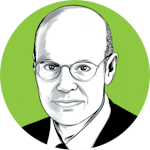Those of a certain age know exactly where they were when they heard the searing news.
But even those younger have a strong sense of President John F. Kennedy's assassination as one of American history's true inflection points.
That's partly due to journalism, but also pop culture, including films like "Parkland," which opened on Friday.
Unlike many of the TV specials and books and articles that will be ubiquitous leading up to the 50th anniversary of the tragedy on Nov. 22, 1963, "Parkland" focuses on ordinary people swept up in extraordinary events: anonymous figures forever altered by an infamous assassination.
Some become famous — or at least their part in the drama did. For instance, "Parkland" portrays how the Zapruder film was sought not just by the feds, but by the Fourth Estate. Multiple media organizations hounded Abraham Zapruder for the grim images of JFK's murder.
Life magazine, in this case ironically titled, was trusted to responsibly publish what Zapruder emotionally calls in the film "a very undignified end to a very dignified man."
Choosing a magazine famous for photography to handle a moving picture may seem discordant today. But back then mass magazines like Life were journalistic juggernauts.
"I don't think that anyone under the age of 40 can imagine how important these few mainstream magazines were," said Prof. Robert Thompson, director of the Bleier Center for Television and Popular Culture at Syracuse University.
"Now one thinks of a magazine as so old-school, so analogue. But Life was still one of the hallmarks of what we now call mainstream culture," said Thompson, a noted media scholar and former president of the National Popular Culture Association.
So powerful was Life that the iconic image of JFK's son saluting his father's coffin is best recognized as a photo, even though it was filmed. Today, that emotional moment would be mostly seen on TV and sent to social-networking sites.
But Life, along with newsweeklies, weakened in the wake of the still relatively new media of its day: television. TV also took its toll on radio.
"Radio didn't demise, it just shifted," Thompson said. By 1963, almost all the stars had left for TV. Radio's move to music, sports and talk was well on its way."
Some of those stars were in network news divisions. Others, like Dan Rather and Bob Schieffer, would soon shine brightly because of their JFK coverage. "But both would have made it anyway," mused Thompson.
One who already had made it was Walter Cronkite. But after that day he seemed elevated to avuncular "Uncle Walter," soon to be "the most trusted man in America." With his steady, sturdy style, laced with natural, accessible emotion, Cronkite became iconic in broadcast journalism and within the broader culture.
"Cronkite that day became the bard, the reporter and the psychiatrist for the entire nation," Thompson said.
Cronkite's choking up wasn't the only emotion, or compassion, from media members. "Parkland" portrays an extraordinary moment when a few reporters and photographers, chronicling the lonely burial of Lee Harvey Oswald, are asked by Oswald's brother to be pallbearers of the assassin. Several set down their cameras and notebooks and silently shouldered Oswald's coffin in order to give an undignified man a dignified end.
The assassination stunned citizens. But back then, of course, there was only mass media and something even more powerful: word of mouth. No tweets, posts or breaking-news e-mails. And especially no cable news networks monitoring every event.
Journalists were jolted, and some were flat-footed. Today there are crisis coverage contingencies, but that wasn't always so in '63.
"In that first couple of hours you could actually see the modern idea of wall-to-wall coverage of a big, breaking story inventing itself in front of your very eyes," said Thompson.
Thompson described how CBS bested NBC's coverage (which Thompson said was occasionally "Keystone cops"). But, he added, CBS had its own inconsistent, incoherent moments: The network broke into "As the World Turns" with a news bulletin, but then remarkably returned to the soap opera as the real-life tragedy unfolded in Dallas. It wasn't until the third interruption that CBS stuck with what Thompson called "an extraordinary four-day television program."
Thompson concluded by commenting on TV news. But given the gridlock gripping Washington, he could just have easily been comparing the perception of that era's Camelot culture to the dispiriting dysfunction apparent nowadays.
"To go back and look at those four days of coverage is to look at American television still in its infancy, but also still in the rigors of its idealistic youth. It's so different from watching it today in its angry, old-man dotage."
John Rash is a Star Tribune editorial writer and columnist. The Rash Report can be heard at 8:20 a.m. Fridays on WCCO Radio, 830-AM. On Twitter: @rashreport.

Film festival shows the transformative power of art
NATO's strength in numbers makes U.S. more secure


